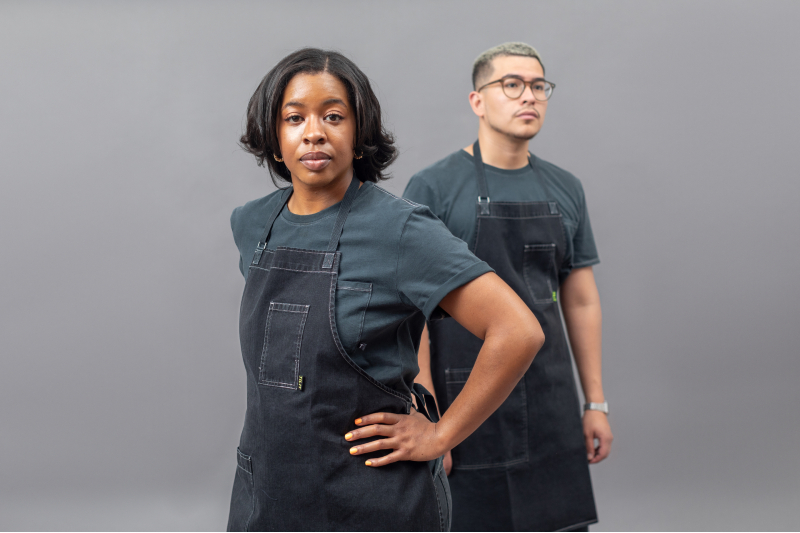
What’s better than the best chef’s apparel? Why, that the cook clothing is created from sustainable fabrics tinted with leftovers, of course.
Cook wear brand Tilit’s founders have been working from behind the curtain to weave renewable elements into their entire process and products. Now the premium chef gear brand introduces its new fall line with sustainable components to complement a classic style. The fresh duds include a number of sustainability-forward components. Recycled and eco-friendly fabrics, such as bamboo and upcycled denim, are just two custom fabrics cobbled from upcycled materials. In a groundbreaking move, several garments are even colored using food waste.
Tilit’s “Natural Dyed Collection,” in collaboration with Audrey Louise Reynolds, “the fashion world’s artisanal dyer,” are hand-painted wearables using floral dyes for color and food waste to enhance the natural complexion. This includes a limited edition apron and work jacket.
Tilit’s washed charcoal collection, for the darker folks behind the line, employs the same 100% cotton fabrics as featured in ALR’s hand-dyed collection, but without the floral flourish. Instead, materials are dyed in New Jersey before they’re constructed in Tilit’s New York City factory. This collection includes Sunday utility pants, the worker jacket, apron, and the Tilit pocket tee.
Related Guides
For a more rugged product, the brand’s upcycled supply aprons are made from 100% upcycled denim. Made in a Guatemalan denim mill, aprons originate as denim scraps and denim by product. Tilit’s team took these Central American scraps to carve out entirely new aprons.
In addition to utilizing natural dyes and textile pieces that would otherwise be landfilled food, recycled aprons weaved together sourced organic cotton and a recycled hemp blend to introduce a fresh green and pink variation of its popular chef’s apron. And instead of reused resources, Tilit sustainable work shirts come in two colors and renewable manufacture: In a bamboo-Tencel blend navy and in organic-recycled cotton gray.
Tilit has even started to source some of this itself through a “Refurbished Program,” which incentivizes customers to save and return stained or lightly damaged goods. Once returned, Tilit promises to repair, dye, clean, and repack items to be sold again at a marketable price.
Worried about the impact about ordering these critical kitchen supplies online? Tilit’s new product packaging is now recyclable as the company has switched to glassine bags. Tilit’s got the whole thing covered, from source to service.
Read More: Tilit Workwear’s Chef Tom Colicchio-approved Aprons



